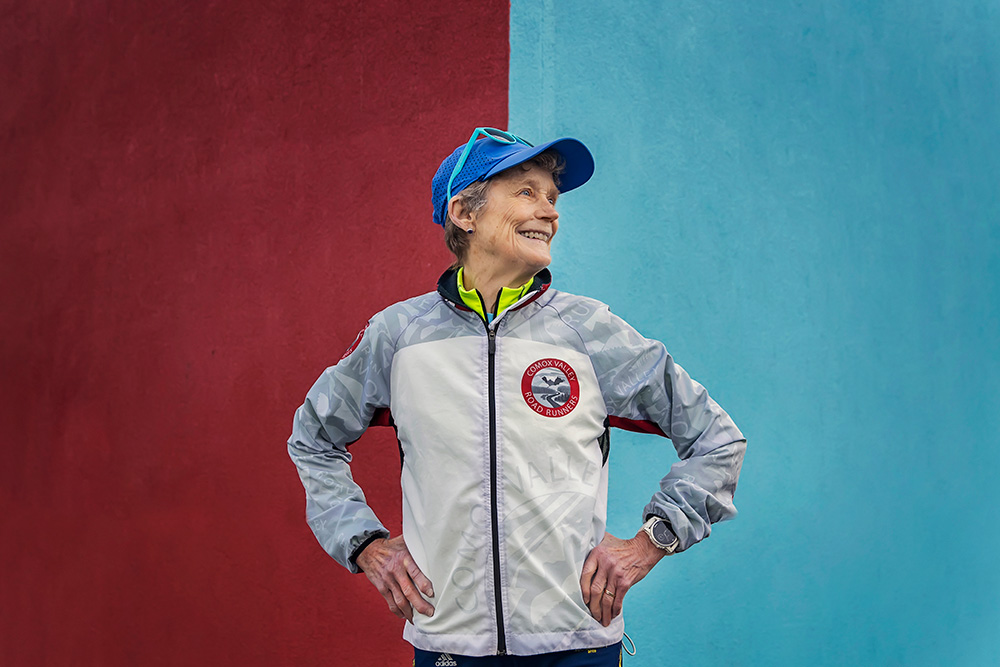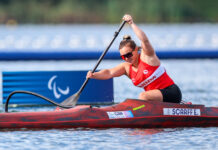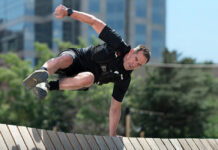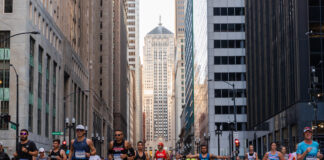Age is catching up to Roslyn Smith—or at least trying to. But, like her rivals, it’s discovering that the road-racing dynamo refuses to be chased down. Undampened by time’s march, the 75-year-old continues to dash. Since moving from Yellowknife, N.W.T., to Comox, B.C., in 2005, she has barely lost a step. Her pace, over the past 18 years, remains brisk.
“That’s a good point to make,” Smith says, chuckling. But it’s clear she’d rather run hills than hear raves. “I am humble when people are complimentary. I don’t think I’m that exceptional, really.”
Nevertheless, she’s autographed the Canadian masters record book on a regular basis for a couple of decades. At a number of age benchmarks (60, 65, 70, 75) over a variety of distances (from five kilometres to marathon), she’s personalized national standards.
Yet her racing days are far from over.
I like being able to say, ‘I did the best I can do’.
That’s a great feeling. I enjoy pushing myself.
On January 14th, Smith whizzed through the Harriers Pioneer 8K in North Saanich, B.C., in 39:05. Two weeks later, she completed the Cobble Hill 10K in 49:11. Pending official approval, those are world records.
Challenges it seems are endless. “Internal interest” is what fuels her. “I can always find new goals, even if the goal posts change a bit. And it’s not always built on time. Maybe feeling really great that day is a win. I like being able to say, ‘I did the best I can do.’ That’s a great feeling. I enjoy pushing myself.”
Only to a point. Because as tough as Smith is—and by now no one would dare to dispute that—she’s wise, and she’s reasonable. Her prowess is enhanced by common sense—not reckless forays down the paths.
But she is hardly satisfied. She talks about doing something to improve her marathon times, which are troubling her. And she is ever eager to find ways to modify her race schedule to maximize performance.
“I can tolerate pain to a fair degree,” says Smith. “As long as it’s pain that’s not debilitating, like when your brain is saying, ‘This is not smart.’ You don’t want to overdo it. Some people tend to be so keen—’Why do 20 minutes when I could do 40?’—and then they get injured. Listen to your body. Be patient.”
Which isn’t to say Smith lollygags.
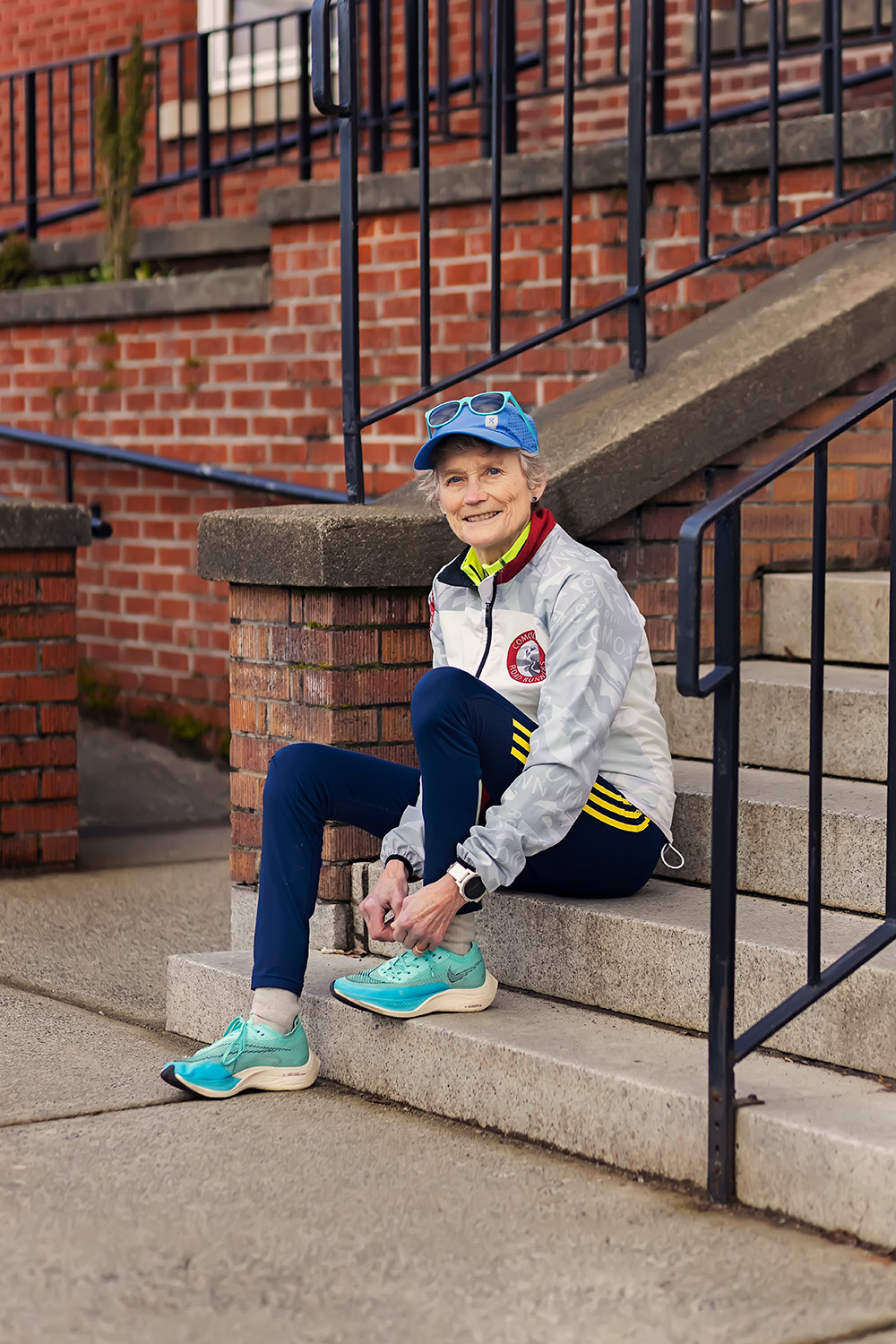
Monday may be a day off, but Tuesday features gym time in the morning and speed work in the evening. After an easy run Wednesday, there is a tempo session on Thursday. Friday is another day off before Saturday’s hour-long run and Sunday’s distance workout, which may stretch to 35 kilometres.
The routine and the camaraderie of her Comox Valley Road Runners clubmates never fail to put a smile on her face. “Psychologically, if the training is not fun, then physically you’re probably going to break down.”
Who could argue with Smith’s approach? With a competitive prime that revealed itself during her late 50s, she refers to herself as a ”late bloomer.” But she’s always been athletic, playing basketball and volleyball as a high school student in Halifax.
Graduating from Dalhousie University—where she had been a member of the varsity field hockey team—Smith embarked on a career as a physical education teacher, working in Nova Scotia and P.E.I. before turning her attention in a fresh direction.
“I had this interest to go north,” she explains. “As it happened, there were several positions available in the western Arctic. And I thought, ‘Well, I’ll go.’”
Which began an uninterrupted stay above the 60th parallel—10 years in Whitehorse, Yukon, then 20 more in Yellowknife—where, while transitioning from teacher to recreation development officer, she embraced cross-country skiing. To fill the summer months, she took up running.
In 1980, adhering to an unsophisticated training schedule—15 kilometres every second day—Smith signed up for the Whitehorse Marathon. “Just something to try,” she says, “just to see how I’d do.” She finished in 3:51, with no hard feelings. “I thought I would do it again. I got hooked.”
But it wasn’t until 2005—a quarter of a century later—that road racing truly took hold.
At 57, retirement gave her more time to devote to the sport. Exposed to high-calibre coaching and year-round training on Vancouver Island, she fell in with a group of like-minded folks. And Smith loves being part of a team. “It really makes a difference. You do better when you’re with somebody else.”
Fellow runners, in turn, appreciate her presence. Because that age-defying clip, in addition to shattering records and drawing headlines, serves to encourage others.
At the 2023 Chicago Marathon, where ages are included on the race bibs, she caused a few double-takes as she tackled the race’s gruelling latter stages. “People would go by and say, ‘Oh, you’re such as inspiration,’” says Smith, grinning. “It’s nice. I like it if people are inspired. If that does help to motivate people, that’s kind of neat.”
And as her splendid body of work continues to expand, she’s proving to be a role model for more than golden-age excellence. Smith is also a pacesetter for modesty.
“It’s not that I’ve had miraculous times,” says the fastest 75-year-old woman on the planet. “I think it’s been the perseverance and willingness to put in the time.”
You may also like: Athletes with IMPACT
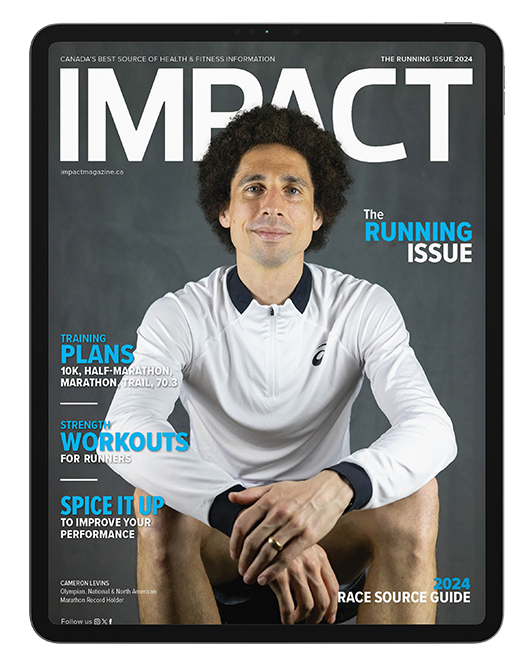
Read This Story in Our 2024 Running Issue
Featuring Canadian Olympic, National & North American Marathon Record holder Cameron Levins. Run your way around the world with some cool, quirky and unconventional races. Train for 10 km right up to a marathon – plus a 25 km trail run and 70.3 program. Strength workouts for runners, spice it up to improve your performance and so much more.


